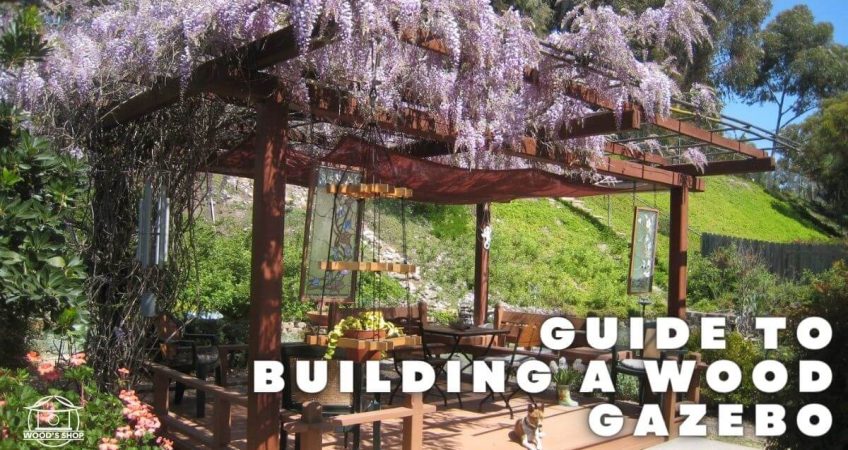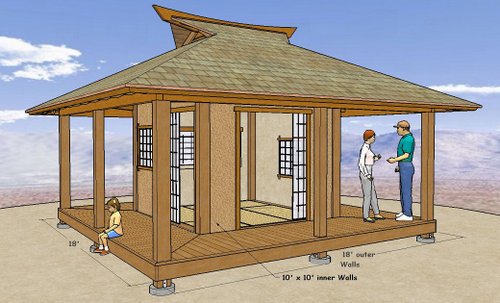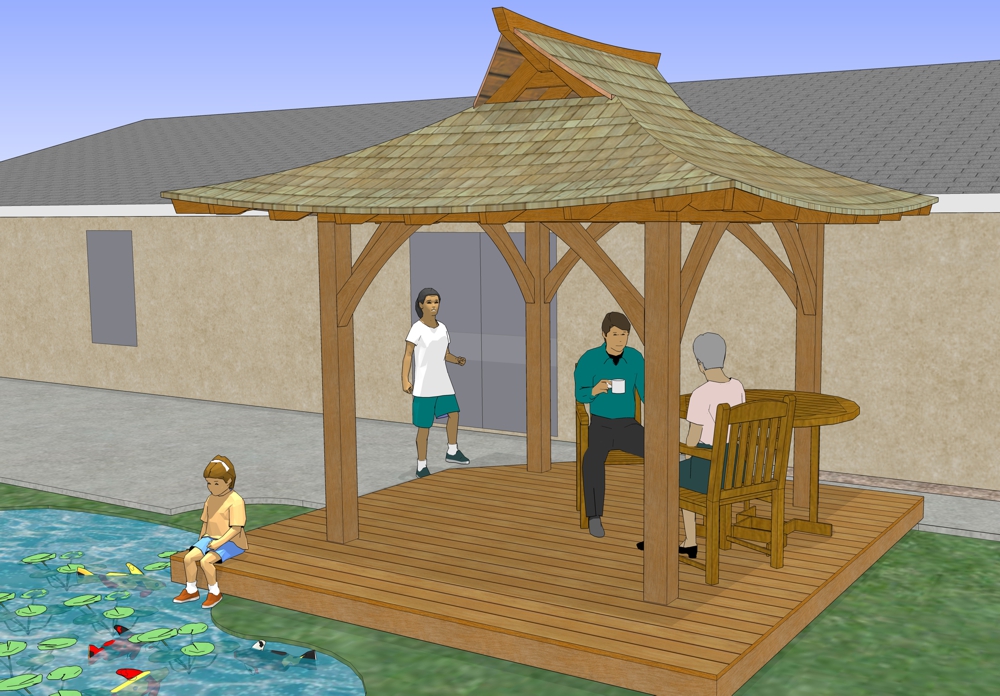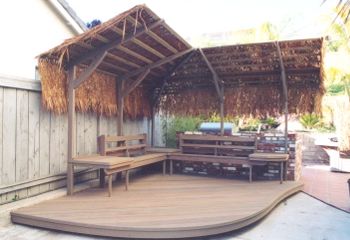Craft Your Own Oasis: Step-by-Step Guide to Building a Wood Gazebo

Creating your own wood gazebo is about more than just building a structure; it’s about crafting a personal sanctuary, a tranquil retreat nestled in your own backyard. The appeal of a wood gazebo goes beyond its aesthetic beauty, offering a versatile space for relaxation, entertainment, and a touch of nature up close. Whether it’s for a peaceful morning coffee, a summer barbeque with friends, or a quiet place to read, your personalized wood gazebo can be your ultimate oasis.
In this article, we aim to transform that vision into a reality with a comprehensive, easy-to-follow guide on how to make a wood gazebo. Let’s embark on this journey of creating a unique space that truly reflects your aspirations and style.
Choosing the Right Location
The first step in crafting your own wood gazebo starts even before the hammer hits the nail; it begins with selecting the ideal location. This crucial decision will dictate not only how your gazebo will function but also how it will integrate with your existing landscape.
When considering a location, sunlight should be your primary concern. A well-lit spot can make your gazebo feel warm and inviting. However, if you live in a particularly hot climate, some shade might be preferable to protect against the harsh afternoon sun.
Wind direction is another key factor. A windy spot could make your gazebo uncomfortable during certain seasons. Try to choose a location that is somewhat sheltered from prevailing winds.
Views are, of course, vital. The gazebo should offer beautiful and relaxing sights. It could be a view of your lovely garden, the sunset, or even a starry night sky.
Proximity to the main structure is also important. If your gazebo is too far from your house, it may feel disconnected. On the other hand, a gazebo too close might encroach on your home’s privacy.

Lastly, consider how the gazebo will integrate with the surrounding landscape. Will it complement your garden? How will the paths lead to it? The gazebo should harmoniously blend with its surroundings, enhancing the overall beauty of your outdoor space.
Remember, there’s no rush in making this decision. Take your time to consider all factors, imagine how your gazebo will look and feel in different locations, and make a choice that truly aligns with your vision of the perfect oasis.
Gathering Materials and Tools
Having chosen your ideal location, it’s time to gather the essential materials for your wood gazebo. The primary material is, of course, wood. You will need wooden planks for the flooring, beams for the structure, and slats for the roof. The type of wood is a matter of personal preference, but cedar and redwood are popular choices due to their durability and natural resistance to insects.
In addition to wood, you will need some hardware items, such as nails, screws, joist hangers, and brackets. These materials are crucial in ensuring the strength and longevity of your gazebo. Also, consider purchasing some outdoor paint or stain to protect your wood from the elements and enhance its appearance.
Roofing materials are another key component. Options range from traditional shingles to more modern metal roofing. Your choice should reflect your personal style, budget, and the climate conditions in your area.
In terms of tools, you will need a saw to cut the wood, a drill for making holes, a hammer or nail gun for fastening pieces together, and a level to ensure everything is straight and even. Other helpful tools include a tape measure, a square, and possibly a ladder.
Ensuring the materials are of high quality and suitable for outdoor use is vital. Purchase your wood from a reputable supplier to ensure you’re getting high-quality, untreated lumber. For your hardware, opt for stainless steel or galvanized materials, as these can withstand outdoor conditions without rusting.
Remember, building a gazebo is a substantial project that requires careful planning and preparation. Having the right materials and tools is a crucial part of that. But once everything’s in place, you’re ready to start turning your vision of a personal oasis into reality!
Read More: Discovering the World of Cedar Gazebos
Designing Your Gazebo
Designing your wood gazebo is one of the most exciting stages of the project. This is where your creativity can truly shine as you bring your vision of the perfect oasis to life. Start by exploring various gazebo designs and styles. From the traditional octagonal or hexagonal shapes to more contemporary rectangular or square designs, the possibilities are limitless.
Customizing your gazebo’s dimensions is another important aspect to consider. The size of your gazebo should be in proportion to the available space in your yard. It should be large enough to accommodate your intended uses, but not so large that it overwhelms your outdoor space. The height of the gazebo, the roof style, and other architectural details are also important considerations that can greatly influence the overall look and feel of your gazebo.
Drawing up a blueprint or plan for your gazebo construction is a crucial step. This can help you visualize your design, ensure all elements are proportionate, and guide you throughout the construction process. There are many software applications available that can assist you in creating a detailed plan.
Remember, the design of your gazebo should reflect your personal style and meet your needs. Whether you envision a simple, rustic structure or an elegant, intricate design, your wood gazebo is sure to be a beautiful addition to your outdoor space and a tranquil retreat for years to come.

Preparing the Foundation
The foundation is the backbone of your gazebo, providing the stability and strength that will ensure the longevity and safety of your structure. It serves as the base upon which your gazebo is built, bearing the weight of the structure and providing resistance to various forces such as wind and gravity. Thus, it’s essential to invest time and effort into creating a strong, level foundation.
To start preparing the foundation, you will first need to clear the site. Remove any grass, rocks, or debris and level the ground. This can be done using a shovel and a rake, making sure to remove enough soil to accommodate your foundation material. It can be helpful to use a spirit level or laser level to ensure the ground is perfectly horizontal.
There are several options for gazebo foundations, each with its strengths and considerations. Concrete footings are a popular choice, providing a durable and sturdy base. This involves digging holes, inserting concrete forms, and then pouring in the concrete. Once the concrete has cured, it’s ready to support your gazebo.
Alternatively, a simpler option might be to use paving slabs or pavers. They are easier to install, but may not provide the same level of stability as concrete footings. However, they can be a suitable choice if your gazebo is relatively light and not exposed to strong winds.
Remember, your gazebo’s foundation is not the place to cut corners. It plays a critical role in the overall stability and durability of your structure. With a strong, level foundation in place, you will have the peace of mind that your gazebo will withstand the test of time and the elements.
Constructing the Framework
Building the framework is a critical step in the gazebo construction process. It sets the shape and structure of your gazebo, and it’s where you’ll see your design start taking physical form. The framework consists primarily of posts, beams, and joists which together form the skeleton of your gazebo.
Begin by cutting your wooden posts to the desired length depending on the height of your gazebo. These posts will form the vertical supports of the gazebo structure. Follow your blueprint closely to ensure accurate measurements. Remember, precision at this stage is crucial for the overall balance and stability of your gazebo.
Next, move on to constructing the roof frame. Cut the beams and rafters to the correct length, and secure them together with screws and joist hangers to form the roof structure. Depending on your design, this could be a simple flat roof, a pitched roof, or a more complicated hexagonal or octagonal shape.
Ensure the joinery throughout the framework is secure and precise. Utilize techniques such as lap joints, mortise and tenon joints, or simple butted joints, depending on the complexity of your design and your carpentry skills.
Once the posts and roof frame are ready, join them together to form the complete framework. Make sure to check the balance and stability of the structure frequently during this process. Use a level to ensure your posts are straight and your roof is level.
Remember, a secure and balanced frame is vital for the endurance and safety of your gazebo. By investing time and effort into creating a precise and solid framework, you’ll lay the foundation for a gazebo that can be enjoyed for years to come.

Roofing and Finishing Touches
A gazebo’s roof is not only a significant structural element but also an opportunity to enhance its aesthetic appeal. The type of roofing material you choose can greatly influence the overall look and ambiance of your gazebo.
For a traditional and rustic look, shingles might be the best choice. Asphalt shingles are the most common, offering durability, weather resistance, and a variety of color options to complement your outdoor space. For a tropical or beachy vibe, you might consider thatch. Keep in mind, though, that thatch may require more maintenance and may not be as durable as shingles.
The process of installing the roof involves carefully laying and securing your chosen roofing material over the roof frame. Be sure to follow the manufacturer’s instructions for best results and utilize roofing nails or staples and a hammer or staple gun for this task.
Once the roof is securely in place, turn your attention to the finishing touches. This is your chance to give your gazebo a personality. Painting or staining the wood can enhance its natural beauty and provide additional protection from the elements. Choose a color or stain that complements your outdoor space and aligns with your personal style.
Other finishing touches might include installing lighting fixtures for evening use, adding outdoor furniture for comfort, or planting climbing plants around the posts for a touch of nature.
Remember, creating your gazebo is a personal journey. With careful planning and attention to detail, you can build a gazebo that not only adds to your outdoor space but also reflects your unique style and taste.
Read More: 5 Reasons Why a Custom Gazebo Kit is a Game-Changer
Adding Comfort and Charm
After the physical structure of the gazebo is complete, it’s time to make the space truly yours by adding comfort and charm. This is where you get to infuse your personal touch to make the gazebo a welcoming and enjoyable place to spend time.
Consider installing comfortable seating to accommodate your needs. For instance, you may opt for a couple of outdoor lounge chairs for relaxation or a table with chairs for alfresco dining. Make sure to choose weather-resistant furniture that can withstand the elements and provide comfort year-round.

Lighting is another important aspect. Not only does it ensure that you can use your gazebo after sunset, but it also adds to the atmosphere. Solar-powered lanterns or string lights can create a warm, inviting glow. If possible, install adjustable lighting that can be dimmed to suit different moods and occasions.
Finally, incorporate decor elements that reflect your style and the gazebo’s surroundings. This could include decorative cushions, outdoor rugs, or even wall art suited for outdoor use. You can also add natural elements like potted plants or a trellis of climbing roses for a touch of greenery.
Remember, creating a cozy and inviting atmosphere is key to maximizing the enjoyment of your gazebo. With the right combination of comfort, charm, and personal style, your gazebo will become a favorite spot for relaxation and social gatherings.
Maintenance and Care
Maintaining your gazebo is essential to preserve its durability and enhance its lifespan. The wooden elements of your gazebo, in particular, need routine care to prevent decay and deterioration.
Start by sealing your gazebo with a high-quality wood sealant. This will form a barrier against moisture and UV rays, protecting the wood from weather damage. Be sure to apply the sealant on a dry day and allow it to fully cure before using your gazebo.
Regular cleaning is another integral part of gazebo maintenance. Sweep away any debris, leaves, or cobwebs that may accumulate in the corners or on the floor. Use a garden hose or a power washer at a low setting to clean the wood surfaces. For stubborn stains, a mixture of mild detergent and warm water should do the trick.
Over time, you may notice signs of wear and tear such as loose screws, peeling paint, or wood splitting. Address these issues promptly to prevent further damage. Depending on the severity, you might need to retouch the paint, tighten the screws, or even replace some wooden parts.
Remember, a well-maintained gazebo doesn’t just last longer; it also provides a more pleasant space for making lasting memories. Be proactive in your maintenance efforts, and your gazebo will continue to be a beautiful centerpiece in your outdoor space for many years to come.
Conclusion
Building a wooden gazebo is a rewarding journey, one that allows you to create your personalized oasis in the comfort of your backyard. By following this comprehensive step-by-step guide on how to make a wood gazebo, you can erect a strong, durable, and aesthetically pleasing gazebo that aligns with your style and needs. From laying a secure framework to adding finishing touches, installing a roof, creating a cozy space, and maintaining your gazebo, every step is crucial to achieving a long-lasting and enjoyable outdoor addition.
The benefits of having your own tranquil haven are manifold – it not only enhances your outdoor space but also provides a perfect spot for relaxation and social gatherings.
As you embark on your gazebo-building adventure, remember that Woods Shop is your ideal partner in this journey. We provide top-quality wood and other materials that ensure your gazebo stands the test of time and weather. Don’t just build a gazebo, build an enduring structure with Woods Shop.
Ready to start? Visit Woods Shop today and let’s help you craft your tranquil haven!
Frequently Asked Questions
1. What type of wood is recommended for building a gazebo?
While the article does not specify a particular type of wood, it’s generally recommended to use a durable and weather-resistant wood like cedar or redwood for outdoor structures like gazebos. However, the choice of wood can vary based on your location, budget, and personal preference.
2. How do I maintain the color and appearance of my gazebo?
The article suggests regularly sealing your gazebo with a high-quality wood sealant to protect against weather damage. Regular cleaning—sweeping away debris and washing the wood surfaces—is also recommended. For maintaining color, consider using a colored stain or paint, which can be retouched over time as needed.
3. What are some ways to personalize my gazebo?
The article offers several suggestions for personalizing your gazebo. These include choosing furniture that suits your needs and style, installing adjustable lighting, and adding decor elements like cushions, rugs, or wall art. You can also incorporate natural elements such as potted plants or climbing roses.